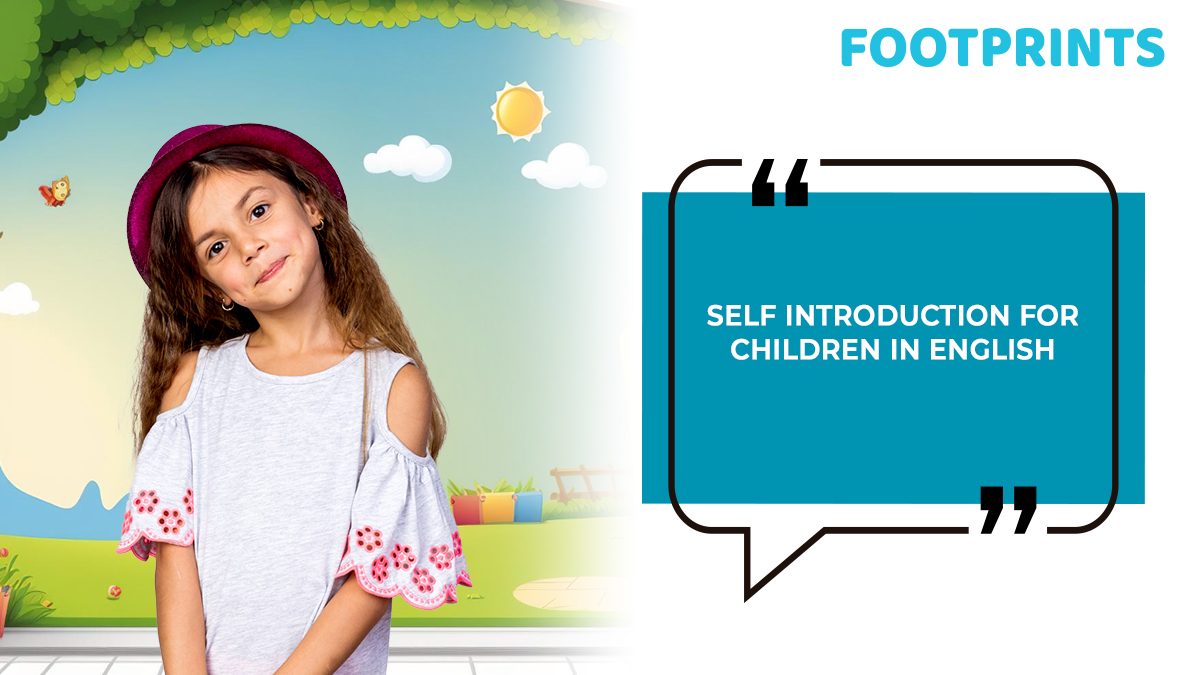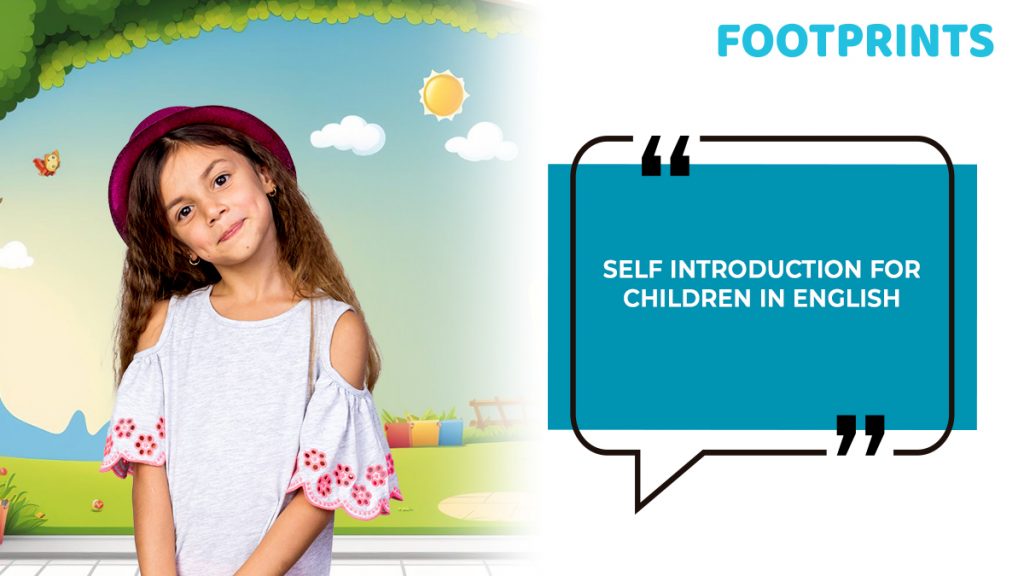

Children of all ages can benefit from effective self-introductions. Not only is it good etiquette, but it also helps children develop self-confidence and much-needed social skills. Significantly, for children going to preschool, an effective self-introduction in English also aids in building their language and vocabulary skills.
Whether you are a parent wanting to teach your child effective ways to introduce themselves or a teacher looking to teach the art of self-introduction to young students, here is some help! With these tips, it will be a pleasure to see young learners comfortably introduce themselves in any situation. It’s a given that these basic yet valuable social skills will help them make new friends. Read on:
Before we get to the process of self introduction, let us look at the many benefits that follow through from it:
- Helps to build connections and friends
- Improves self-confidence
- Improves presentation skills
- Leaves a powerful impression
Steps to follow:
1. Smile
As elementary as this step may sound, it’s the most crucial part of the introduction. Not only is ‘well begun, half done,’ but a genuine smile can be the most significant icebreaker. Smiling and maintaining eye contact will help the child establish an instant connection. Depending on the situation, this can be followed by a handshake or a high-five!
2. An Opening Line
It’s helpful to start with an exciting opening line. Simply saying confidently, ‘Hi, I am [Name],’ and then asking, ‘What is your name?’ can help establish a connection. Not only do people love to hear their names, but the odds are that the child will immediately strike up a conversation with them after this introduction.
In a more formal setting where the child needs to talk a bit about themselves, the following information will come in handy:
- My name is…
- I am… years old.
- My hobbies include…
- I speak the following languages….
- My favourite food is….
Ensure that the child practices these lines aloud. It will help you assess the child’s body language and pronunciation. A word of caution here: when listening to the child practice the lines, be fully present in the moment and appreciate the child’s efforts. Correcting the child’s pronunciation and, most importantly, the exercise should not be perceived as a fault-finding activity. If the child gets that impression, they may hesitate to speak before you and others. Remember that any early fears a child develops around public speaking tend to linger well into their childhood years. In your zeal to help them become the best public speaker, ensure you do not sow the seeds of fear instead.
You can also help them practice their lines in various role-playing scenarios, providing a safe and controlled environment where the child can feel comfortable. Using different scenarios, this approach will make the exercise more enjoyable and engaging. You could even use costumes and props to maintain high levels of engagement. The laughter and fun will also make it a great bonding experience.
Furthermore, you can have the children introduce themselves in real-life scenarios. This will help the child see you as an effective role model. Each time you introduce yourself to someone in a real-life situation and initiate a conversation, it offers the child much-needed confidence.
Throughout this process, you must emphasize to the child and yourself that making mistakes is perfectly okay. It’s not about striving for flawless self-introduction. Focusing solely on perfection detracts from the enjoyment of building genuine connections and may cause the child to approach any new encounter with fear.
Additionally, if you are getting the child ready for a formal speech where they need to introduce themselves, the following tips will come in handy:
- Ensure that the speech is well-structured.
- It will help to rehearse it well.
- Using visual aids and props will come in handy.
- Ensure that the body language is confident.
- Help the child tackle stage fear by practicing in front of a live audience.
Here is one handy example:
Example
Hi, my name is Aarav, and I am 4 years old. I’m a very playful child who loves animals. When I grow up, I want to become a veterinarian to care for and spend time with many animals. I also enjoy playing with toys, especially building blocks and cars. You’d be surprised by my collection. I have many friends and would love to make even more. Nice to meet you!
3. Asking questions
Suppose the child isn’t delivering a formal speech during their introduction. In that case, it can also be beneficial to inquire about the other person’s background, interests, familiarity with the meeting location, and more. This way, the children will quickly find themselves in a fresh and engaging conversation.
4. Introduce others
After establishing an initial connection, it can be beneficial if the child can also introduce the person to others. This approach is particularly effective in settings like a summer camp or when starting preschool, where children may not know each other. Everyone has an inherent fear in such situations, and having one child help forge connections can benefit everyone.
To Sum Up
With just a little effort, meeting new people and forming new connections can be a pleasurable experience. When children can effectively introduce themselves, they become more confident in making new friends. Here’s to children mastering this essential and valuable social skill!
At Footprints Preschool, we provide a wide range of opportunities for children to explore the world around them and learn through our carefully designed HighScope Curriculum, known as ‘active participatory learning.’ In addition to our focus on equipping young ones with age-appropriate life skills, including communication skills, we enable our young learners to navigate various scenarios. Our safe, healthy, and nurturing environment ensures holistic learning and growth!

Purvesh is a multidimensional leader at Footprints Childcare. As a TED speaker and IIT-Delhi alumnus, his passion for education is fueled by his experiences as a certified life coach and parent. He goes beyond traditional parent engagement activities, creating meaningful connections through insightful parenting workshops and open communication channels. Purvesh’s commitment to empowering parents, teachers, and students is the foundation of everything we do at Footprints. What motivates Purvesh? As a parent himself, the challenges his son faces in the educational system are the driving force for him.

